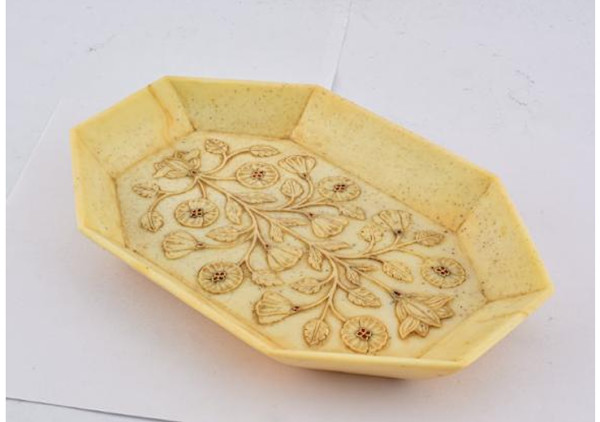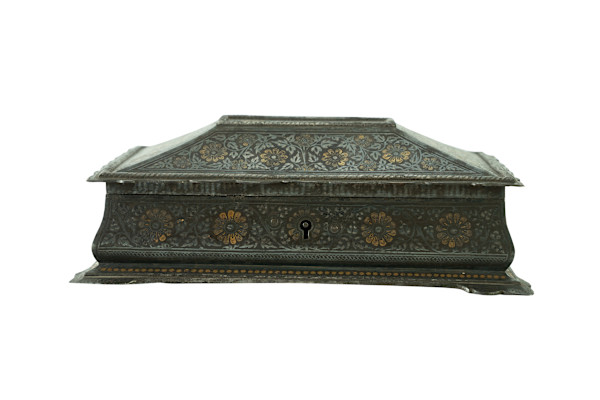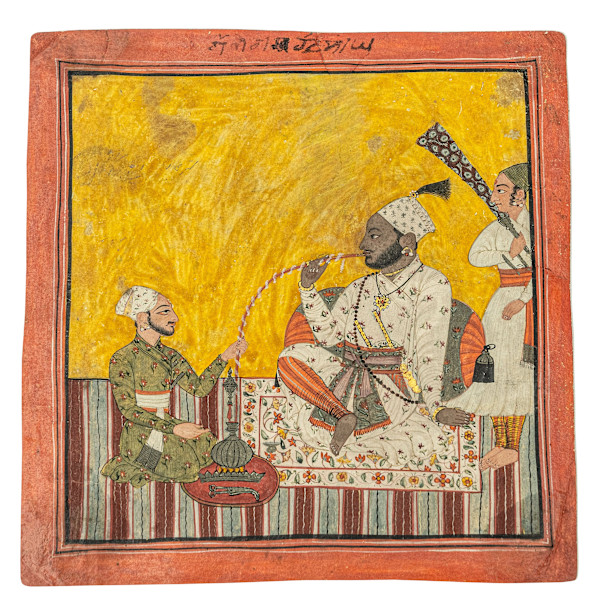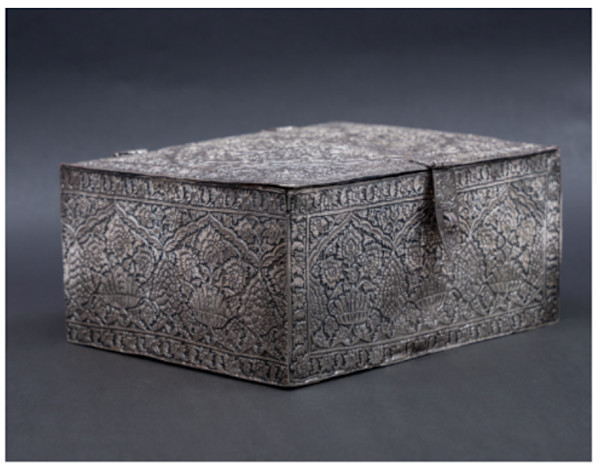
Commanding in scale and rich in spiritual symbolism, this monumental engraved brass torch stand represents one of the most distinguished and rare survivals of 16th-century Safavid metalwork. Rising to an impressive height of 34 inches, it is the only known example of this scale, outshining even the 24-inch version in the Qatar Museums Collection. Structurally, the piece closely echoes a distinctive group of Safavid sham’dans (lampstands) that began to flourish in Iran during the early 1500s. A notable comparison can be drawn with a related example housed in the Victoria & Albert Museum, London (inv. no. 790-1901), which features a similar cylindrical body crowned by an upper flange designed to support a domed cover— ingeniously crafted to flip over and serve as an oil reservoir. This intelligent design reveals the object’s duality: both functional and symbolic, utilitarian and transcendent. What sets this particular torch stand apart, beyond its rare size, is its superbly engraved surface, alive with a dense tangle of interlacing vegetal scrolls, rhythmic arabesques, and deeply meaningful poetic inscriptions. The background has been meticulously cross-hatched and blackened; a technique highly characteristic of Safavid metalwork from the 1560s to the 1580s. This stylistic hallmark allows it to be securely dated and confidently linked to other celebrated examples, such as the pieces preserved in the State Hermitage Museum, St. Petersburg (inv. no. IR 2202) and the Hussein Afshar Collection. Encircling its surface are beautifully rendered verses by the great Persian poet Hafiz Shirazi, whose works frequently appear on objects intended for devotional use. These verses are far from mere decoration. They evoke the Sufi ideals of divine love, inner awakening, and spiritual radiance, deeply aligning with the lampstand’s function as a bearer of light. In essence, it becomes a visual and poetic embodiment of spiritual illumination, bridging the physical world and metaphysical contemplation. Many such torch stands were presented as votive offerings to Shi’i shrines, where they served both ritualistic and symbolic roles. Not only did they physically light the interiors of shrines, but their inscribed messages and majestic forms encouraged inward reflection, casting a spiritual light that echoed the flicker of their flames.
- Subject Matter: Brass
- Collections: Brass










